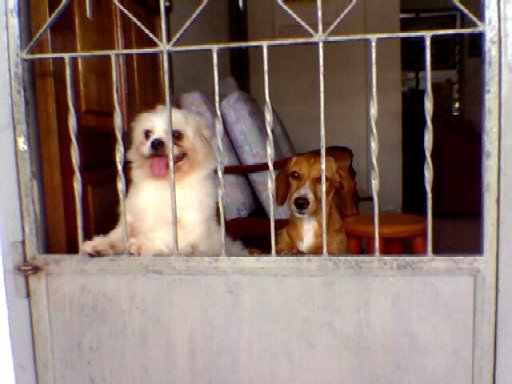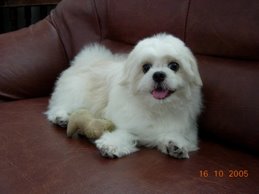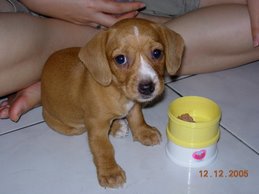Australian Labradoodle Puppies Are A Sweet Choice
Considering only the physical attributes when opting to adopt a new dog may not be the wisest decision one could make. To avoid getting a pet that is not compatible to an individual's lifestyle, taking time to consider the breed's other characteristics such as typical health issues, grooming needs and general behavioral tendencies is advisable. There are many qualities that Australian Labradoodle puppies have which many people find quite attractive.
This breed first came into existence in the late 1980's in an attempt to create a hypoallergenic guide dog. It is the result of combining a Labrador Retriever with a Poodle. They are also commonly utilized as emotional therapy animals or assistance pets for the disabled.
Results may vary, even within a single batch of offspring, because this is still a relatively newer breed. That is to say, some dogs may have more Labrador like features and attributes, while others may be more representative of a Poodle, and a few could be a balanced combination. To get more well mixed pups, most breeders are taking care to mate only adults that have both features equally.
These dogs are classified into the three main size categories of Miniatures weighing up to 30lbs, Mediums who are as much as 45lbs, and Standards that can exceed 100 pounds. They stand anywhere between 14" to 24" tall at the withers and typically live about ten to fifteen years when in good health. Aside from the broad head and pronounced eyebrows, their other physical characteristics vary at this time due to the imbalanced breeding.
Their coats may be of any color since both the Labrador and the Poodle are found in many shades. The fur of these dogs basically falls under three main categories. The straight, scraggly type is referred to as hair, the wavy look is called fleece, and that which is really curly like a lambs' is labeled as wool and is typically the best option for being free of allergens.
These dogs do not require regular bathing no matter their fur type, though frequent brushing is necessary to avoid mattes or tangling. The fleece and wool type coats never stop growing so they can get rather bushy if not clipped every few months. As a whole, this breed has a less musty odor than other dogs tend to produce.
With proper care and exercise, these animals are generally healthy but may be prone to some of the issues that are typical of their parent breeds. The most common malady is hip dysplasia which is common in Labs, followed closely by the genetic optical disorders often suffered by Poodles. Keeping their eyes and ears cleaned and making routine visits to the vet can help stave off most problems.
As far as character goes, these animals have the benefit of being the product of two of the most intelligent and well behaved breeds of all. Among their many attractive qualities are their devotion to family, the ability to coexist with cats and other types of pets, and a nature that includes being docile, gentle, affectionate, social and very smart. Excessive barking around strangers, when left alone or when excited may be the biggest drawback to this type of pup.
This breed first came into existence in the late 1980's in an attempt to create a hypoallergenic guide dog. It is the result of combining a Labrador Retriever with a Poodle. They are also commonly utilized as emotional therapy animals or assistance pets for the disabled.
Results may vary, even within a single batch of offspring, because this is still a relatively newer breed. That is to say, some dogs may have more Labrador like features and attributes, while others may be more representative of a Poodle, and a few could be a balanced combination. To get more well mixed pups, most breeders are taking care to mate only adults that have both features equally.
These dogs are classified into the three main size categories of Miniatures weighing up to 30lbs, Mediums who are as much as 45lbs, and Standards that can exceed 100 pounds. They stand anywhere between 14" to 24" tall at the withers and typically live about ten to fifteen years when in good health. Aside from the broad head and pronounced eyebrows, their other physical characteristics vary at this time due to the imbalanced breeding.
Their coats may be of any color since both the Labrador and the Poodle are found in many shades. The fur of these dogs basically falls under three main categories. The straight, scraggly type is referred to as hair, the wavy look is called fleece, and that which is really curly like a lambs' is labeled as wool and is typically the best option for being free of allergens.
These dogs do not require regular bathing no matter their fur type, though frequent brushing is necessary to avoid mattes or tangling. The fleece and wool type coats never stop growing so they can get rather bushy if not clipped every few months. As a whole, this breed has a less musty odor than other dogs tend to produce.
With proper care and exercise, these animals are generally healthy but may be prone to some of the issues that are typical of their parent breeds. The most common malady is hip dysplasia which is common in Labs, followed closely by the genetic optical disorders often suffered by Poodles. Keeping their eyes and ears cleaned and making routine visits to the vet can help stave off most problems.
As far as character goes, these animals have the benefit of being the product of two of the most intelligent and well behaved breeds of all. Among their many attractive qualities are their devotion to family, the ability to coexist with cats and other types of pets, and a nature that includes being docile, gentle, affectionate, social and very smart. Excessive barking around strangers, when left alone or when excited may be the biggest drawback to this type of pup.
About the Author:
You can get excellent tips for choosing a dog breeder and more info about Australian Labradoodle puppies for sale at http://www.agapepawslabradoodles.com/index.html right now.
>














.jpg)






.jpg)

0 comments:
Post a Comment